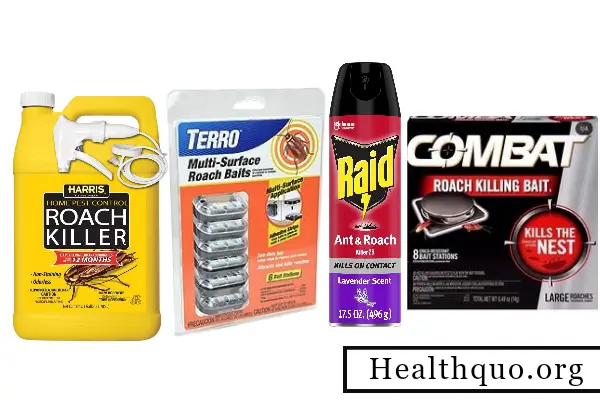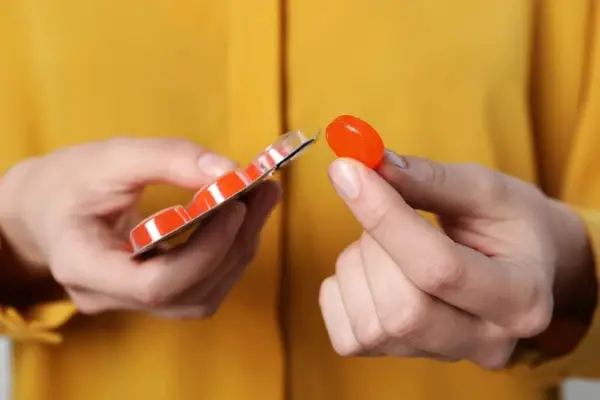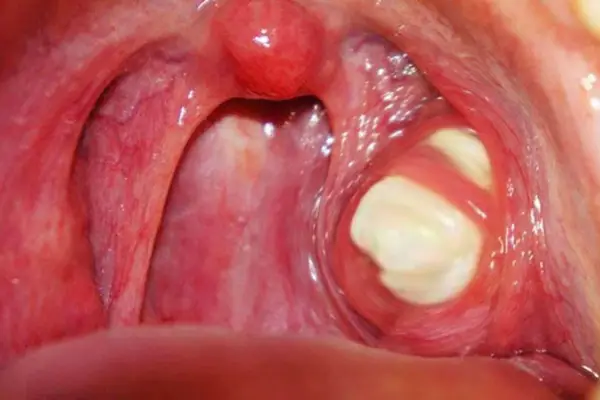Ingesting a roach killer is indeed harmful to humans. While these products contain insecticides designed to wipe out pesky roaches, they can also pose some health risks to humans and pets if ingested, inhaled, or if they come into contact with the skin.
The active ingredients in the roach killer ingested will determine the symptoms you can expect. Common symptoms include nausea, vomiting, abdominal pain, diarrhea, dizziness, headaches, difficulty breathing, muscle twitching, and, in severe cases, seizures. Some individuals may also experience increased salivation, sweating, weakness, or fatigue.
If you accidentally ate a roach killer, it’s crucial not to induce vomiting unless instructed by a medical professional or poison control center. Instead, immediately call Poison Control for advice at 1-800-222-1222. If you notice any life-threatening symptoms quickly go to the ER or call 911.
Is Cockroach Bait Harmful To Humans If Ingested?
Ingesting cockroach bait that contains substances like abamectin, cypermethrin, and hydramethylnon can be harmful to humans, particularly if ingested in significant amounts.
Abamectin is used in Terro and raid bait stations and other roach products. It acts as a neurotoxin to pests by interfering with their nervous system. For humans, ingestion can cause symptoms like nausea, vomiting, abdominal pain, and dizziness. It’s important to handle these products according to the manufacturer’s instructions to avoid accidental exposure.
Raid Ant & Roach Killer contains Cypermethrin, a synthetic chemical known for its effectiveness in pest control. It affects the nervous system of insects leading to their death. While it is designed to be safe for use around humans when used as directed, ingesting or inhaling it can potentially cause symptoms like nausea, vomiting, dizziness, and in severe cases, could affect the nervous system
Hydramethylnon is an active ingredient in Combat bait and works by disrupting the energy production in insects, effectively killing them. It is considered to have low toxicity to humans, but ingestion can still result in gastrointestinal symptoms such as nausea, vomiting, and diarrhea.
For a compound even more toxic than borax, boric acid can be dangerous to humans if ingested. It is usually in tiny crystalline granules, or mixed with other compounds in roach killer powders. Upon ingestion, boric acid can cause irritation of the mucosa of mouth, esophagus and stomach. Boric acid affects the stomach and intestine leading to gastrointestinal symptoms like nausea, vomiting, diarrhea, and abdominal pain. It is also absorbed into the systemic circulation, potentially resulting in neurological symptoms, kidney damage, and in severe cases, shock or death
What About Roach Killer Gel?
Ingesting roach killer gels, such as Terro Roach Gel Bait (containing Fipronil) and Raid Gel Bait (containing Indoxacarb), is not safe.
Fipronil is a broad-spectrum insecticide that disrupts the insect’s central nervous system, leading to death. It is toxic to humans, especially if ingested, inhaled, or absorbed through the skin in significant quantities.
Symptoms of Fipronil poisoning can include sweating, nausea, vomiting, headache, stomach pain, dizziness, weakness, and seizures in severe cases.
Indoxacarb works by blocking sodium channels in the nerves of insects, leading to paralysis and death.
For humans, ingestion of Indoxacarb can lead to potential health risks, including gastrointestinal symptoms (such as nausea, vomiting, and diarrhea), and methemoglobinemia depending on the amount ingested.
How Toxic Is Cockroach Spray To Humans?
Commercially available cockroach sprays usually contain pyrethroids like prallethrin, imiprothrin, and bifenthrin, which can pose risks to humans and pets if not used according to their label instructions.
Prallethrin is found in products like Killa Ant & Roach Spray. It’s a type of pyrethroid, a synthetic chemical similar to the natural insecticidal component pyrethrin found in chrysanthemum flowers. Pyrethroids affect the nervous system of insects leading to their death.
In humans, exposure to high levels of prallethrin can cause coughing, wheezing, shortness of breath, runny or stuffy nose, chest pain, or difficulty breathing. Skin or eye contact can cause irritation.
Imiprothrin is used in products like Raid Ant & Roach Killer Spray and Hot Shot Ant & Roach Spray. Similar to prallethrin, it is also a pyrethroid and affects the nervous system of insects.
High levels of exposure in humans may lead to symptoms like lung inflammation, nausea, vomiting, and headache. It can also irritate the skin and eyes.
Bifenthrin is the active ingredient in products like Sniper. It is another type of pyrethroid, known to be moderately toxic when ingested or absorbed through the skin.
Exposure to bifenthrin can lead to irritation of the skin and eyes, and ingestion can cause nausea, vomiting, and abdominal pain. More severe exposure can affect the central nervous system, leading to symptoms such as tremors, seizures, or loss of consciousness in extreme cases.
What To Do If You Have Ingested Roach Killer?
Identify the Substance
If you can do so safely, try to identify the exact product or substance ingested. Take a picture of the product label with your phone, or write down the name and active ingredients.
Gather Important Information
While waiting for medical help or on your way to the hospital, try to estimate how much of the substance was ingested and when. This information will be crucial for healthcare providers.
Call Poison Control
In the United States, the Poison Control Center can be reached at 1-800-222-1222. They are available 24/7 and can give you specific, immediate instructions on what to do next.
Go To The ER
If you have ingested a large amount of the roach killer or notice any serious symptoms, go to the nearest emergency room or call emergency services if you are not able. Take the roach killer container or a picture of the label with you, if possible, so the medical personnel can quickly understand what substances are involved.
Can I Sleep In My Room After Using Cockroach Spray?
It’s generally advised to avoid the area until the spray has dried completely, which can take several hours. Ventilate the area well before returning to ensure any airborne chemicals have dissipated.
Always prioritize safety by using products according to their labels





